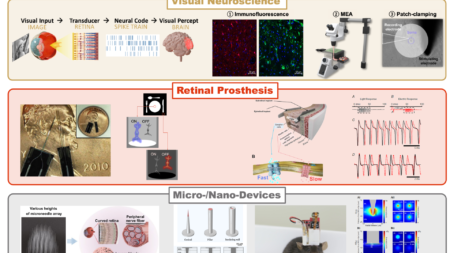
임매순 , Maesoon Im, Ph.D.
Principal Research Scientist / New Lab Webpage (새로운 연구실 홈페이지, 인공시각 연구회)
EDUCATION
- Ph.D. in Electrical Engineering, KAIST (Korea Advanced Institute of Science and Technology), Daejeon, South Korea (Mar 2003 – Aug 2009)
- B.S. magna cum laude in Electrical Engineering, KAIST, Daejeon, South Korea (Mar 1999 – Feb 2003)
RESEARCH CAREER & ACTIVITIES
- Associate Professor, Division of Bio-Medical Science & Technology, University of Science & Technology, Seoul, South Korea (Mar 2020 – Present)
- Principal Research Scientist, Brain Science Institute, KIST (Korea Institute of Science and Technology), Seoul, South Korea (Mar 2022 – Present)
- Senior Research Scientist, Center for BioMicrosystems, Brain Science Institute, KIST, Seoul, South Korea (Aug 2018 – Feb 2022)
- Assistant Scientist, Department of Ophthalmology, Henry Ford Health System, Detroit, Michigan, USA (Nov 2015 – Jul 2018)
Featured in “Vision & Visionaries” of Henry Ford Health System: https://www.youtube.com/watch?v=ZlRIlMkp1co&feature=youtu.be - Adjunct Assistant Professor, Department of Ophthalmology, Visual and Anatomical Sciences, Wayne State University School of Medicine, Detroit, Michigan, USA (Aug 2016 – Jul 2018)
- Adjunct Assistant Professor, Department of Electrical and Computer Engineering, Wayne State University College of Engineering, Detroit, Michigan, USA (Nov 2016 – Jul 2018)
- Research Fellow, Department of Neurosurgery, Harvard Medical School, Massachusetts General Hospital, Boston, Massachusetts, USA (Nov 2011 – Oct 2015)
- Research Associate, VA Boston Healthcare System, Boston, Massachusetts, USA (Jan 2015 – Sep 2015)
- Postdoctoral Research Fellow, Department of Electrical Engineering and Computer Science, University of Michigan, Ann Arbor, Michigan, USA (Jun 2010 – Oct 2011)
- Postdoctoral Researcher, Department of Electrical Engineering, KAIST, Daejeon, South Korea (Sep 2009 – May 2010)
RESEARCH INTERESTS
We are looking for prospective graduate students who are eager to learn something multidisciplinary and to contribute to the field of neural prosthetics. Please e-mail your CV to Maesoon at maesoon.im@kist.re.kr
We are recruiting passionate graduate students!
Information
We are currently seeking exceptional candidates who would share our passion for impactful research. Our lab is studying Neural Engineering for various neural prosthetic applications such as retinal implant which aims to restore sight to blind individuals. The field of Neural Prosthetics is at the intersection of Electrical Engineering and Neuroscience. Given the multidisciplinary nature of our research, the lab is open to passionate candidates from diverse disciplines. If you are interested in joining our lab, please email Maesoon at maesoon.im@kist.re.kr







